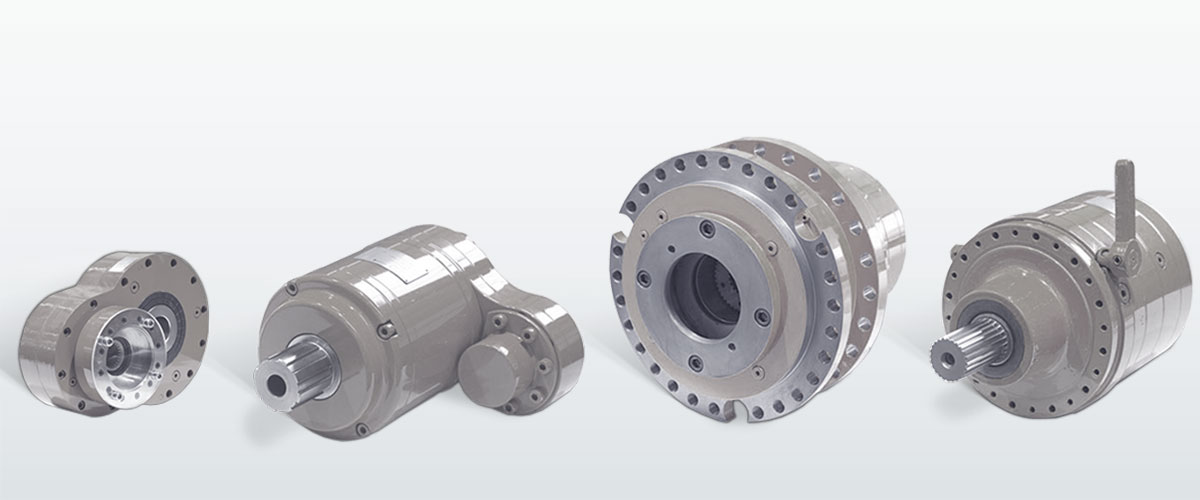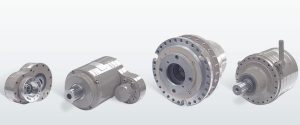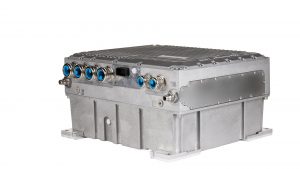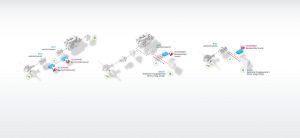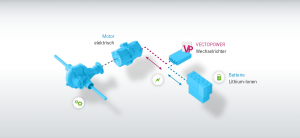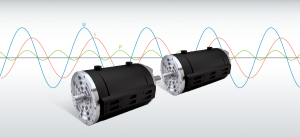Traction drives for on- and off-road vehicles can be designed with or without a gearbox; both variants can be useful in practice. The following text is to illustrate the respective advantages and disadvantages as well as give specific application examples of when it is advantageous to use a gearbox in an electric drive train or when a direct drive is the better choice.
The purpose of gearboxes
The purpose of gearboxes is to transfer the motor power to the wheels as well as to reduce this power in order to achieve more torque and less speed. In comparison to electric motors, combustion engines have a comparably low torque in the lower speed range. Without a gearbox, this would result in insufficient power transmission for starting, acceleration, and ascents. In addition to the goal of achieving the best possible efficiency with the largest share in the optimum speed range, this is the reason why gearboxes are always used in traction applications with combustion drives. The gearbox, which connects the motor with the drive train, adapts the torque to the respective load situation that is called up. This allows the motor power to be used efficiently. The gears are also adapted to the torque, which every vehicle needs for starting and acceleration – the gearbox converts enough in 1st gear that the motor does not die or over-rev. The gear spread defines the ratio range of the gearbox, thus creating the ratio between the individual gears.
How is it possible to operate electric drives without a gearbox?
The most important difference between a combustion engine and an electric motor is that an electric motor already has the full torque available upon starting – almost independently of the speed. This advantage of electric motors is additionally supported by the VECTOPOWER developed by ARADEX. This means that the gearbox is not necessary for power transmission in itself, unlike in the case of combustion engines. However, it can still be useful to equip electric drive trains with a gearbox as well.
Gearbox and direct drive
The use of a gearbox as well as a solution using a direct drive have various advantages and dis-advantages, which must be weighed against each other in individual cases.
Direct drive
- No increased losses due to additional components: The direct connection of the motor to the cardan shaft makes it possible to avoid problems such as friction losses, gear backlash, imprecise motions, or wear, making it possible to achieve a better overall efficiency.
- No additional maintenance effort for the gearbox.
- Purchase price for gearbox eliminated.
Gearbox
- The motor can be designed to be smaller and lighter
- Low purchasing costs for the motor since it can be designed for less torque than with a direct drive
- The gear spread, which is present in addition to the field weakening (see below), pro-vides more torque during starting and allows higher final speeds
The listed arguments can carry different weight depending on the application. A detailed analysis of an application is therefore required to evaluate whether a gearbox or direct drive is the better choice. It is necessary to find the most useful solution for a specific application from among the following variants:
- Hub motor
- Motor near the wheel (with reduction, single-stage)
- Direct drive with cardan shaft and axle differential with reduction
- Additional fixed gear stage (reduction or summation gearbox)
- Shiftable gearbox
Field weakening in electric drives
To simulate the so-called gear spread, electric vehicles can also use something called field weakening. Field weakening is a method in which the magnetic flux between the rotor and stator is deliberately weakened using currents in the stator in order to change the torque constant. Field weakening allows higher speeds at lower torques with the same terminal voltage. The function of field weakening is thus comparable to a switchable gearbox and allows an economical design of the drive train with a high starting torque as well as high final speeds. In the following, three vehicle categories with possible drive configurations are presented as examples from our projects.
Example 1: Utility vehicle with 7.5 tons
In a 7.5-ton-heavy utility vehicle that is to ensure a climbing power of 18% and a maximum speed of 88 km/h, the motor was directly connected to the cardan shaft. With a 150 kg heavy PM reluctance hybrid motor (VM600M-18W0115-2, max. torque: 1150 Nm) it was possible to use a differential for the gear ratio of i=4.5. This made it possible to achieve a high efficiency. With the VP600-18W160-HP inverter, ARADEX also has the right power electronics for this drive train.
Example 2: Utility vehicle with 26 tons
A 26-ton vehicle uses two PM reluctance hybrid motors (VM600M-28W0115) that are coupled via a summation gearbox to achieve an optimum space utilization. The climbing power is 18% and the maximum speed 88 km/h. The drive designed in this way comes with a differential of up to i=5.1, which the summation gearbox additionally offers a reduction of i=2.7. The max. torque is thus a total of up to 30,500 Nm. With two inverters of the type VP600-18W268, ARADEX also offers suitable electronics for this drive as well.
Example 3: Utility vehicle with 44 tons
In a 44-ton-heavy utility vehicle that is to ensure a climbing power of up to 18%, the motor was directly connected to the cardan shaft. With a 750 kg heavy PM reluctance hybrid motor (VM600M-18W0700), it was possible to use a differential for the gear ratio of i=6.88. With two inverters of the type VP600-18W268, ARADEX also has the right power electronics for this drive train.
Conclusion
There is no general answer to the question of whether a direct drive on the cardan line should be used with or without a gear reduction. The evaluation requires an application-specific con-sideration of the vehicle, the motor, and the planned load profile. In the end, the mentioned advantageous and disadvantages must be weighed against each other in order to decide what factors are more important for the respective application.
